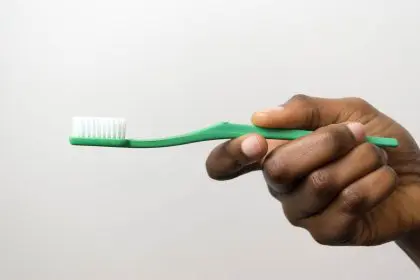Urinary tract infections rank among the most common bacterial infections, affecting millions of people each year. While many understand the basic causes and symptoms of UTIs, fewer recognize the significant impact that psychological factors, particularly stress, can have on both developing these infections and experiencing more severe symptoms.
How UTIs develop in your body
Urinary tract infections occur when bacteria enter and multiply within any part of the urinary system – the kidneys, ureters, bladder, or urethra. Most commonly, these infections affect the lower urinary tract (bladder and urethra), though more serious infections can spread to the kidneys.
The majority of UTIs develop when bacteria from the digestive tract, typically E. coli, spread from the anus to the urethra. Because people with vaginas have shorter urethras positioned closer to the anus, they experience UTIs more frequently, though people of any gender can develop these infections.
Once bacteria enter the urinary tract, they can multiply rapidly in the warm, moist environment. If the body’s natural defense mechanisms fail to eliminate these invaders, infection takes hold, triggering the immune system’s inflammatory response that creates the characteristic symptoms.
The body naturally flushes bacteria from the urinary tract during urination. However, certain factors can compromise this natural defense, including dehydration (which reduces urination frequency), structural abnormalities in the urinary tract, or weakened immune function – which is where stress enters the picture.
Recognizing UTI symptoms early
Identifying UTI symptoms promptly can help prevent progression to more serious infections. The most common indicators include:
Pain or burning sensation during urination often represents the first noticeable sign of infection. This discomfort results from irritation and inflammation of the urethra as urine passes through the infected area. The sensation can range from mild discomfort to intense burning that causes significant distress.
Frequent urination urges, sometimes occurring every 30-60 minutes, signal the bladder’s irritated state. Even more frustrating, these frequent trips to the bathroom often produce only small amounts of urine, creating a feeling of urgency without relief.
Pelvic pressure or discomfort manifests as a persistent ache or heaviness in the lower abdomen. This symptom results from inflammation of the bladder and surrounding tissues as the infection progresses.
Cloudy, strong-smelling, or blood-tinged urine indicates the presence of white blood cells, bacteria, and sometimes red blood cells in the urine. The characteristic odor comes from bacterial byproducts, while visible blood results from inflammation damaging the delicate tissues lining the urinary tract.
More severe infections may involve fever, flank pain, and systemic symptoms like fatigue. These signs typically indicate the infection has spread to the kidneys (pyelonephritis) and requires immediate medical attention.
The surprising stress-infection connection
The relationship between stress and UTIs involves complex interactions between the nervous, endocrine, and immune systems. Under stress, your body initiates a cascade of physiological responses that, while designed for short-term survival benefits, can compromise immune function when prolonged.
Acute stress triggers the “fight-or-flight” response, releasing hormones like adrenaline and cortisol that temporarily enhance certain aspects of immunity. However, chronic stress – the kind experienced during ongoing work pressure, relationship difficulties, or financial problems – creates sustained high cortisol levels that suppress immune function over time.
Specifically, chronic stress reduces the production and effectiveness of white blood cells responsible for fighting bacterial invaders. These immune cells, including neutrophils and natural killer cells, play crucial roles in preventing bacteria from establishing infections in the urinary tract.
Beyond direct immune suppression, stress increases inflammation throughout the body. This systemic inflammatory state can exacerbate UTI symptoms and potentially slow healing once infection develops. The inflammatory response, while necessary for fighting infection, becomes counterproductive when excessive.
Stress also influences behavior in ways that increase UTI risk. Stressed individuals often neglect self-care habits that prevent UTIs – they may forget to stay hydrated, postpone bathroom trips despite feeling the urge to urinate, or neglect proper hygiene practices due to time constraints or mental distraction.
Additionally, stress can alter urinary habits directly through its effects on pelvic floor muscles. Chronic tension often leads to pelvic floor dysfunction, potentially interfering with complete bladder emptying – a significant risk factor for UTIs, as residual urine provides an excellent environment for bacterial growth.
UTIs versus stress-related urinary symptoms
Complicating the picture further, stress can create urinary symptoms that mimic UTIs even without infection. These conditions, collectively called lower urinary tract symptoms (LUTS), include:
Interstitial cystitis/bladder pain syndrome causes chronic bladder pressure, discomfort, and frequent urination without infection. Often triggered or worsened by stress, this condition involves inflammation of the bladder wall but differs from UTIs in that bacteria aren’t present. Many patients report flare-ups during particularly stressful life periods.
Overactive bladder syndrome creates sudden, urgent needs to urinate that may be difficult to control. While various factors contribute to this condition, research demonstrates that psychological stress can trigger or worsen symptoms through its effects on bladder muscle control and nerve signaling.
Pelvic floor dysfunction often develops or worsens during stressful periods. The pelvic floor muscles, which support the bladder and other pelvic organs, can become overly tense or uncoordinated during stress. This dysfunction creates urinary symptoms similar to UTIs, including frequency, urgency, and discomfort.
Distinguishing between infection and stress-related symptoms requires laboratory testing of urine samples to detect bacteria. This distinction proves crucial for proper treatment – antibiotics effectively address bacterial infections but won’t help stress-related urinary symptoms and may cause side effects or contribute to antibiotic resistance when used unnecessarily.
Effective stress management for urinary health
Addressing stress represents a powerful yet often overlooked strategy for both preventing UTIs and managing related urinary symptoms. Effective approaches include:
Mindfulness practices reduce stress by focusing attention on the present moment without judgment. Regular meditation, even just 10-15 minutes daily, decreases cortisol levels and inflammation while enhancing immune function. Simple breathing exercises can activate the parasympathetic nervous system, counteracting stress responses throughout the day.
Physical activity provides perhaps the most effective natural stress reliever. Exercise reduces cortisol levels, increases endorphins, improves sleep quality, and enhances overall immune function. Even moderate activities like walking, swimming, or yoga offer significant benefits for both stress reduction and urinary health.
Adequate sleep proves essential for stress management and immune function. During sleep, the body repairs tissues, produces immune cells, and processes emotional stress. Establishing regular sleep patterns, creating a restful environment, and limiting screen time before bed can significantly improve sleep quality.
Social connections buffer against stress effects, with research showing that meaningful social relationships reduce stress hormone levels and inflammation. Regular interaction with supportive friends or family members, even virtually, provides emotional outlets and practical assistance during stressful periods.
Professional support through therapy offers valuable tools for managing chronic stress. Cognitive-behavioral techniques help identify stress triggers and develop healthier responses, while other therapeutic approaches address underlying causes of chronic stress and anxiety.
Direct prevention strategies for UTIs
Beyond stress management, specific preventive measures significantly reduce UTI risk:
Hydration stands as perhaps the simplest yet most effective prevention strategy. Drinking plenty of water dilutes urine and increases urination frequency, helping flush bacteria from the urinary tract before infection establishes. Aim for pale yellow urine as an indicator of adequate hydration.
Post-intercourse urination represents a crucial habit for sexually active individuals. Sexual activity can introduce bacteria into the urethra, but urinating within 30 minutes afterward helps flush these potential pathogens out before they can multiply and cause infection.
Proper wiping technique – front to back after using the toilet – prevents introducing intestinal bacteria to the urethral area. This simple habit significantly reduces UTI risk, particularly for people with vaginas.
Avoiding irritants like scented hygiene products, douches, or harsh soaps around the genital area helps maintain healthy bacterial balance and prevents irritation that might increase infection susceptibility. The genital area’s natural microbiome provides protection against pathogenic bacteria when left undisturbed.
Cranberry products have shown some preventive benefit, particularly for those with recurrent UTIs. While not universally effective, compounds in cranberries may prevent bacteria from adhering to urinary tract tissues. Unsweetened cranberry juice or supplements provide this benefit without added sugars.
When to seek medical attention
Despite preventive efforts, UTIs sometimes develop and require proper medical care:
Persistent symptoms lasting more than 24-48 hours warrant medical evaluation. Early treatment prevents infection spread to the kidneys and reduces complication risks.
Severe symptoms including fever, flank pain, nausea, or vomiting indicate possible kidney involvement requiring immediate medical attention. Kidney infections can lead to serious complications if not promptly treated.
Recurrent infections – typically defined as three or more UTIs within a year – justify comprehensive evaluation. Underlying anatomical abnormalities, immune system issues, or resistant bacteria may contribute to this pattern and require specialized management approaches.
Standard treatment typically involves antibiotics targeted to the specific bacteria causing infection. Completing the full prescribed course remains essential even when symptoms improve quickly, as partial treatment can lead to recurrence or antibiotic resistance.
By understanding the intricate connection between stress and urinary health, you gain powerful tools for preventing UTIs and managing related symptoms. This holistic approach – addressing both psychological factors and specific preventive practices – offers the most effective strategy for maintaining urinary wellness and overall health.

















